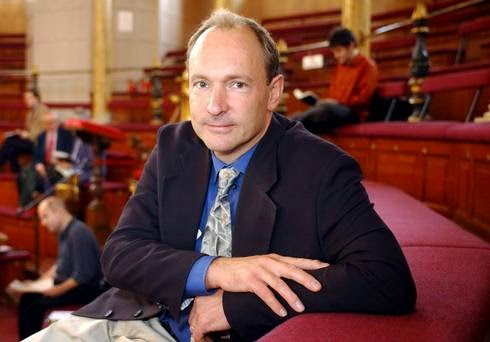‘A CHAMPION TEAM WILL ALWAYS BEAT A TEAM OF CHAMPIONS’
A team is not necessarily a group.
And a group is not necessarily a team.
GROUP:-
any collection or assemblage of persons or things.
TEAM:-
a number of individuals undertaking different tasks with a view to achieving a
pre-determined goal.
TEAM
Groups have to exist in the same
time and usually in the same place. The key characteristic of a group is that
of being a collection of individuals who are designated as a ‘group’, that’s
it.
The individuals who make up teams on the other hand can
exist in the same place or different places; in the same time or in different
times.
A group can have no purpose, one purpose or many purposes. A
no purpose group: a number of individuals who share a geographical proximity ie
they just happen to be standing together for the moment. A one purpose group:
the protest march. The many purpose group: the crowd at a U2 concert.
A team can have only one purpose.
If an organisation has one purpose (goal) it has one team
and if it doesn’t it will be dysfunctional. It will also be one group. If an
organisation has a number of purposes (goals) it will have a corresponding
number of teams; BUT it will be, at the same time, one group.
Group members’ individual roles/tasks are not specifically
defined and many individual members may have the same role/task.
Team members’ individual roles are clearly specifically
defined and duplication of roles is avoided. Take the Australian Rugby team,
the Wallabies; 15 team members each with a clearly defined and differentiated
task BUT each with a common goal, to win by scoring points. This is not a
group.
GROUP
or TEAM ?
I have been told that it has been ‘agreed’ by these groups
of birds in chevron flight that the two birds immediately behind the leader
rest in anticipation of their turn as leader. If that is so, this group is
starting to look like a team. To confuse things even further one definition of
‘flock’ is: a large group of things
GROUP
Then why is it that in researching for this BLOG I found the
terms used interchangeably so often?
Having got that off my chest……….; what I want to just touch
on in the space and time I have available is the evolution and current state of
play of teamwork in healthcare.
To Err Is
Human: Building a Safer Health System (1) had a lot to do with
generating interest in the creation of teams for the delivery of healthcare by
highlighting that preventable
medical errors, of which it turned out there were many, were often the result
of dysfunctional or non-existent teamwork.
Yet, ‘… training programs designed to improve
team skills are still a new concept for medicine, particularly for physicians
who are trained largely to be self-sufficient and individually responsible for
their actions. On the other hand, outside of healthcare, research has shown
that teams working together in high-risk and high-intensity work environments
make fewer mistakes than individuals’ (2).
So if we agree that effective teamwork is
integral to enhanced clinical outcomes in the provision of healthcare, all we
need to do is to introduce teamwork (dare I say in lieu of groupwork). Easy.
Not so easy (“Teamwork: Easier Said than Done” ― Nauman Faridi )
Even today there is limited knowledge of what
makes health professionals effective team members, and even less information on
how to develop skills for teamwork. Often it depends on to whom you talk.
Healthcare managers might select leadership, knowledge of organizational goals
and strategies and organizational commitment, respect for others, commitment to
working collaboratively and to achieving a quality outcome. It does not take
much experience, or imagination for that matter, to recognise that clinicians
would identify a largely (although, admittedly, not entirely) different skill
set. One skill that I would expect to see on the lists of both is communication.
Background
Although effective teamwork has been consistently
identified as a requirement for enhanced clinical outcomes in the provision of
healthcare, there is limited knowledge of what makes health professionals
effective team members, and even less information on how to develop skills for
teamwork. This study identified critical teamwork competencies for health
service managers.
Methods
Members of a state branch of the professional association
of Australian health service managers participated in a teamwork survey.
Results
The 37% response rate enabled identification of a
management teamwork competency set comprising leadership, knowledge of
organizational goals and strategies and organizational commitment, respect for
others, commitment to working collaboratively and to achieving a quality
outcome.
Conclusion
Although not part of the research question the data
suggested that the competencies for effective teamwork are perceived to be
different for management and clinical teams, and there are differences in the
perceptions of effective teamwork competencies between male and female health
service managers. This study adds to the growing evidence that the focus on
individual skill development and individual accountability and achievement that
results from existing models of health professional training, and which is
continually reinforced by human resource management practices within healthcare
systems, is not consistent with the competencies required for effective
teamwork.
Inadvertent
patient harm is all too often the result of absent or poor communication.
Medical care is complex and complete and accurate expression through language
is limited. Creating a healthcare environment, clinical or non-clinical, where
all those working together feel empowered to speak, is the first step; and the
second is to adopt a standardised, common language where what you mean when you
express yourself is what I understand when I hear what you say. Mistakes are
inevitable if we do not do this.
But back to the teaching of
healthcare, right back, to the undergraduate years.
The existing focus is still largely on ‘..
individual skill development and individual accountability and achievement that
results from existing models of health professional training, and which is
continually reinforced by human resource management practices within healthcare
systems, is not consistent with the competencies required for effective teamwork.’(6.)
Things are improving, which is something, but ever so
slowly………
As they say in rugby……..
‘A CHAMPION TEAM WILL ALWAYS BEAT A TEAM OF CHAMPIONS’
Peter Carter
Chief Executive Officer
August 07 2014
1.
November 1999
I N S T I T U T E O F M E D I C I N E
Shaping the Future for Health
TO ERR IS HUMAN: BUILDING A SAFER HEALTH
SYSTEM
2.
Mt Sinai J Med. 2009 Aug;76(4):318-29. doi:
10.1002/msj.20129.
Teaching teamwork in medical education.
Lerner S1, Magrane D, Friedman E.
3.
Qual Saf
Health Care 2004;13:i85-i90 doi:10.1136/qshc.2004.010033
The human factor: the critical
importance of effective teamwork and communication in providing safe care
M Leonard1, S Graham2,
D Bonacum
4.
Teamwork and patient safety in dynamic domains of healthcare: a review
of the literature
T. MANSER
Article first published online: 22 OCT
2008
Acta Anaesthesiologica Scandinavica
Volume 53, Issue 2, pages 143–151,
February 2009
5.
Computational & Mathematical Organization
Theory
December 2000, Volume 6, Issue 4, pp
339-360
Virtual Teams: What are their
Characteristics, and Impact on Team Performance?
Sze-Sze Wong,
Richard M. Burton
6.
BMC Health Serv Res. 2007; 7: 17.
Published online Feb 7, 2007.
doi: 10.1186/1472-6963-7-17
Effective healthcare teams require
effective team members: defining teamwork competencies
Sandra G Leggat
















